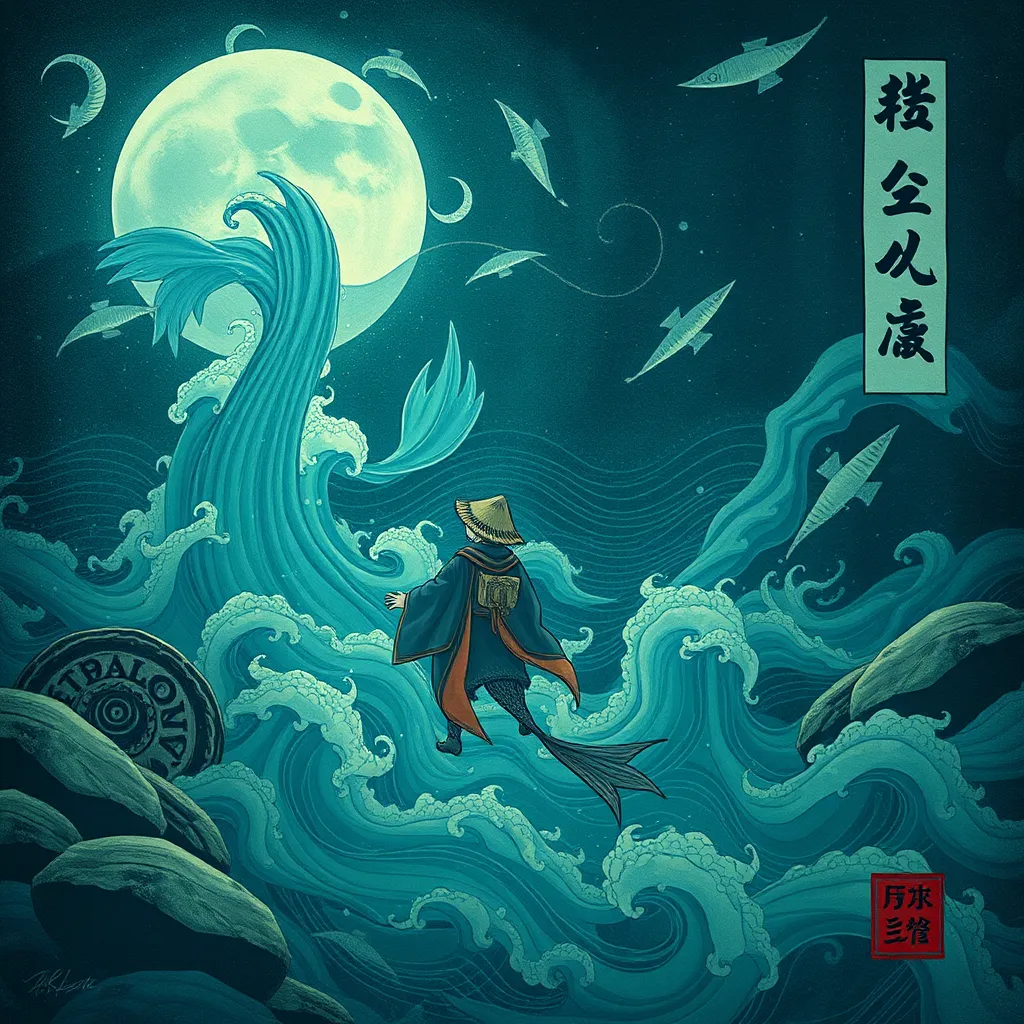Japanese Lore: Unveiling the Myth of the Ningyo (Mermaid)
I. Introduction to Ningyo
The Ningyo, a captivating figure in Japanese folklore, is often translated as “mermaid.” However, this definition scarcely captures the depth of its significance and the nuances of its lore. The Ningyo is more than just a fantastical creature; it embodies the complex relationship between humanity and the sea, reflecting cultural beliefs, fears, and desires.
Mermaid myths are present in various cultures worldwide, each with its unique interpretations and attributes. From the enchanting sirens of ancient Greece to the benevolent mermaids of Celtic folklore, these aquatic beings often represent dualities—beauty and danger, allure and peril. This article aims to delve into the rich history, characteristics, and cultural significance of the Ningyo, while also exploring its connections to other mermaid legends.
II. Historical Origins of the Ningyo
The origins of the Ningyo can be traced back to ancient Japanese texts, where they were first mentioned in the Nihon Shoki (Chronicles of Japan) around the 8th century. These texts describe the Ningyo as a creature with a human upper body and a fish-like lower body, possessing the ability to bring both fortune and misfortune to those who encounter them.
Chinese mythology has had a significant influence on the Ningyo legend. The concept of mermaid-like beings can be traced back to ancient Chinese tales, which often depicted them as beautiful maidens who could grant wishes or foretell the future. Over time, these influences merged with local beliefs, leading to the evolution of the Ningyo as a unique entity within Japanese culture.
III. Physical Description and Characteristics
The Ningyo is commonly depicted as having the upper body of a woman and the lower body of a fish. However, their features can vary considerably across different regions of Japan. Some descriptions highlight:
- Long, flowing hair that is often said to shimmer like the ocean.
- Skin that ranges from a pale hue to a greenish tint, echoing the colors of the sea.
- Eyes that are large and captivating, sometimes described as having a hypnotic quality.
In addition to these common features, regional variations exist. For instance, in some coastal areas, Ningyo are depicted with more grotesque characteristics, reflecting local fears of the sea and its dangers.
The symbolism behind the Ningyo’s physical traits is profound. The fish body symbolizes adaptability and a connection to water, while the human upper body represents the complexity of human emotions and experiences. Together, they embody the duality of beauty and terror often associated with the ocean.
IV. Ningyo in Folklore and Legends
Ningyo appear in numerous tales and legends, each highlighting different aspects of their character. One famous story is that of the Ningyo caught by a fisherman, who, upon releasing her, is granted a wish. This tale encapsulates the themes of kindness and reciprocity that are prevalent in many Ningyo stories.
The Ningyo is also seen as a harbinger of fortune and disaster. In some legends, encountering a Ningyo can lead to great wealth; in others, it may signify impending tragedy. This duality makes them complex figures in folklore, often embodying the unpredictable nature of the sea.
Local customs and rituals also reflect the Ningyo’s significance. In some coastal communities, offerings are made to the sea to appease these mermaid-like beings, ensuring safe fishing and bountiful catches. Such practices illustrate the Ningyo’s role in the spiritual life of coastal inhabitants.
V. Cultural Significance and Artistic Representation
The Ningyo has been a source of inspiration in traditional Japanese art and literature. From ukiyo-e woodblock prints to classical literature, the Ningyo’s image has adorned many artistic forms, often symbolizing the allure of the sea and the mysteries it harbors.
In modern times, the Ningyo has found new life in film, anime, and pop culture. Characters inspired by Ningyo appear in various media, often reinterpreted to fit contemporary narratives. For instance, the Ningyo’s representation in anime often reflects themes of identity and belonging, resonating with younger audiences.
This evolution of the Ningyo in popular culture has contributed to a renewed interest in Japanese folklore, making it an integral part of contemporary Japanese identity.
VI. Ningyo and the Sea: A Connection to Nature
The Ningyo serves as a powerful symbol of the ocean’s mysteries and its profound connection to nature. In many stories, the Ningyo reflects the beauty and danger of the sea, representing the balance between human existence and the natural world.
Environmental themes are prevalent in Ningyo stories, often highlighting the need for conservation and respect for marine life. The Ningyo’s connection to the sea underscores the importance of preserving marine ecosystems and recognizing the intrinsic value of all living beings.
VII. Comparative Analysis with Other Mermaid Myths
A comparative analysis reveals both similarities and differences between the Ningyo and Western mermaid legends. For instance, like Western mermaids, Ningyo are often associated with beauty and seduction. However, cultural differences emerge in their portrayal:
- Western mermaids are frequently depicted as enchanting but dangerous, luring sailors to their doom.
- The Ningyo, while also capable of bringing misfortune, is often portrayed as a more complex figure, embodying both benevolence and malevolence.
Moreover, the role of gender and morality in mermaid myths varies across cultures. In Western folklore, mermaids are typically seen as seductresses, whereas the Ningyo’s stories often emphasize themes of kindness, reciprocity, and respect for nature.
VIII. Conclusion: The Enduring Legacy of the Ningyo
In summary, the Ningyo is a multifaceted figure in Japanese folklore, representing the intricate relationship between humanity and the sea. From its historical origins to its modern interpretations, the Ningyo continues to captivate and inspire.
The relevance of the Ningyo in contemporary society reflects a growing appreciation for folklore and mythology. As we explore the stories and meanings behind these creatures, we gain insight into the values and beliefs that shape our understanding of the world.
In closing, the Ningyo invites us to delve deeper into the rich tapestry of Japanese folklore, encouraging an appreciation for the mysteries of the sea and the enduring power of myth.




